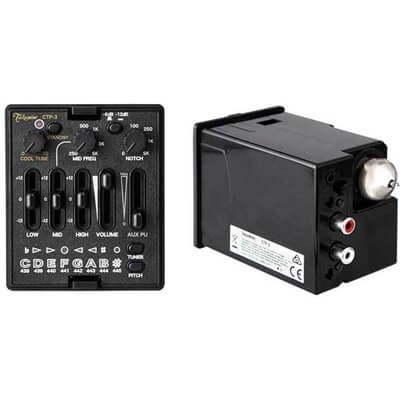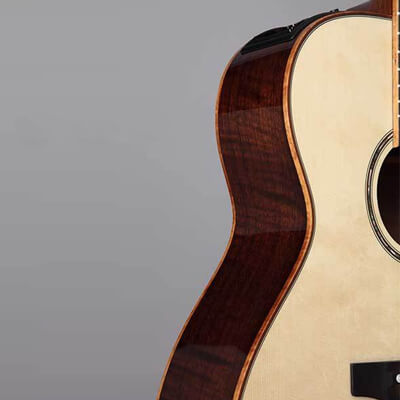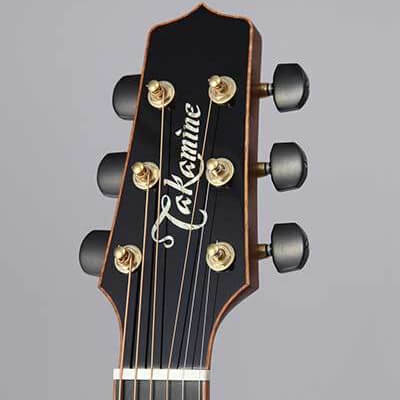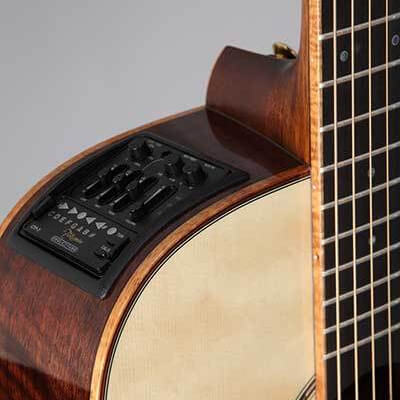Description
The Limited Edition Takamine Custom Pro 5 is one of only 20 in the world. Takamine Custom Pro models are built in Takamine’s custom shop at their Sakashita Plant, in Japan, to the highest specifications.
Featuring a Solid Bearclaw Engelmann Spruce Top, Solid Flamed Walnut back and sides Pearloid Dot with Abalone Inlays and Ebony Fretboard and bridge, the Takamine Custom Pro 5 is packed with premium materials.
Takamine Craftsmanship
- The Delicate Soundboard Balance
Spruce and cedar soundboards have been used for well over a millennium, and the modern bracing system has been around for at least 150 years. Takamine use a traditional “X” bracing pattern on their steel-string models, differently voiced for each application.
Rather than make any radical departures, Takamine make many small changes that add up to a significant difference in volume, balance and richness. Takamine soundboards are braced and voiced by hand—by tapping each top, a skilled luthier knows just how to shape the braces for the best possible response.
- The Fret Secret
Most guitar makers don’t give frets enough credit—or attention. A good fret job can help a player reach new heights.
Examine the frets on a Takamine. What you see is the work of a laser-guided fret finishing system that levels and crowns each fret to within 0.0001” of dead-on. Fret a note, notice how the string contacts the center line of the fret perfectly, and hear the clarity when you play. A good fret job can be the difference between a nice guitar and a great guitar.
- Appointments By Deluxe
Takamine pioneered the use of uncommonly artistic and complex inlay work on guitars for working players. Takamine have developed the art of design and the craft of precise inlay work far beyond the capabilities of most other guitar makers.
Look closely at Takamine rosettes and inlays. Such meticulous handiwork is a clearly visible sign of Takamine’s commitment to excellence in every element of Takamine guitars.
- Is There A Perfect Neck Shape?
A century ago, the wide classical shape with a flat fingerboard was the only shape considered “proper”. Over the years we’ve become more open-minded. Some players feel you can never be too thin, while others feel it’s far better to be fat. It’s that personal taste thing again.
Takamine necks have an asymmetrical “C” shape. An ergonomic contour slightly thinner on the bass side of the neck so that it fits the natural shape of your hand. Overall, it’s thin from front to back and medium in width, with a gentle fingerboard arch. Perfectly comfortable.










